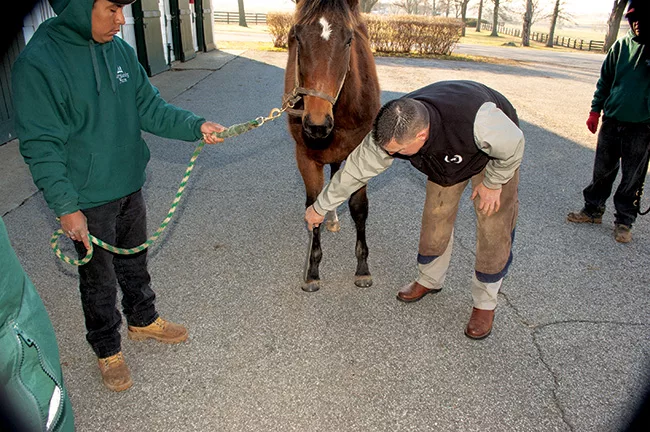American Farriers Journal
American Farriers Journal is the “hands-on” magazine for professional farriers, equine veterinarians and horse care product and service buyers.

Horses aren’t made from a perfect mold. So how do you trim and shoe the “imperfect” horse, the horse with conformation faults? Does farriery affect conformation? Does conformation dictate farriery?
Let’s look at the art and science behind shoeing for conformation faults.
According to Adam’s and Stashak’s Lameness in Horses, 6th Edition, “Conformation refers to the physical appearance and outline of a horse as dictated primarily by bone and muscle structures.” The test goes on to say that conformation is not absolute, but relates to function.
Certain conformation faults such as offset knees or long pasterns have been shown, at least in racing Thoroughbreds, to increase the risk of injury. However, the science of the effect of conformation on performance and lameness is still developing. But, since limb rotation and angulation can affect hoof growth and shape through altered weight bearing and footfall, conformation issues often become a concern for farriers.
Andrew Parks, of the University of Georgia College of Veterinary Medicine, differentiates between conformation and balance in the hoof while acknowledging that the distinction is a bit artificial since, “if you pick up the foot, you’re looking at both at the same time.”
In the equine veterinarian’s mind, conformation in the distal limb is a static thing, the sum of all of the pieces, how the size, shape, and angles relate, primarily driven by skeletal structure. He uses balance, on the other hand, to describe the relationship between the hoof capsule, P3 and the ground.
Parks…